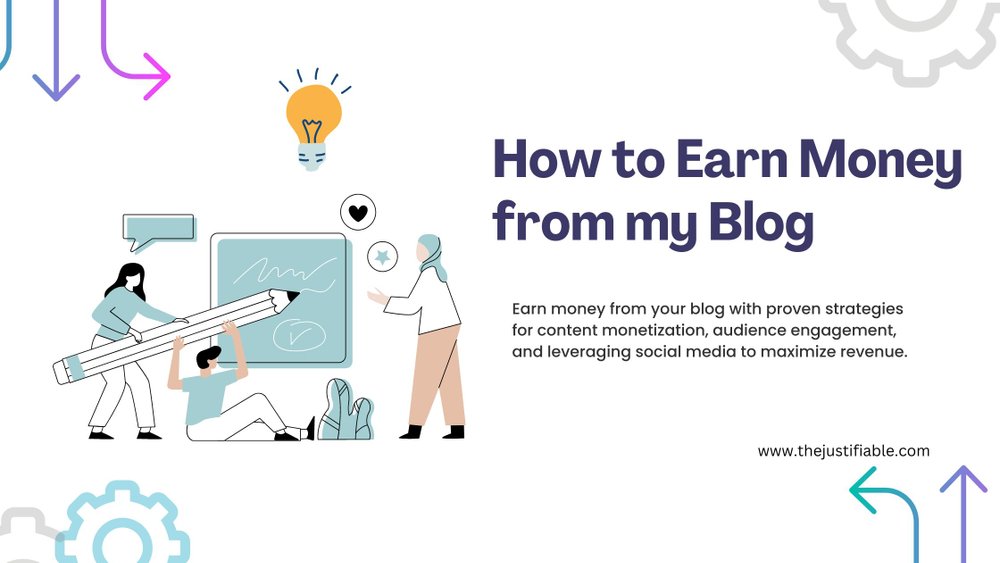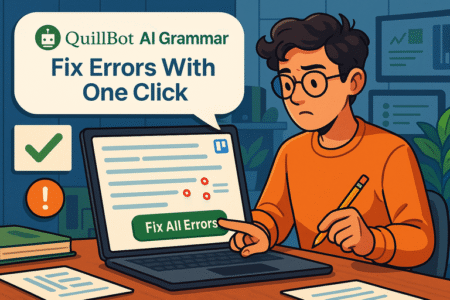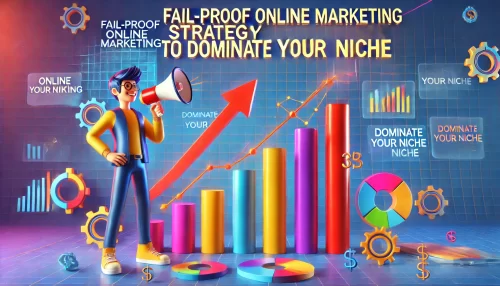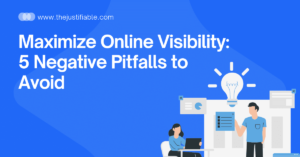Earn money from your blog—what if I told you that this could be your reality? How can you transform your blogging passion into a profitable venture? Is it really possible to generate income through your blog? These are questions many bloggers ask themselves at some point.
From my perspective, the journey from a hobbyist blogger to a money-making influencer is not just possible; it’s a path well-trodden by those willing to put in the effort and strategize effectively. In this guide, I’ll walk you through the first steps to monetize your passion and turn your blog into a thriving revenue stream.
Table of Contents
Discover the First Steps to Monetize Your Passion
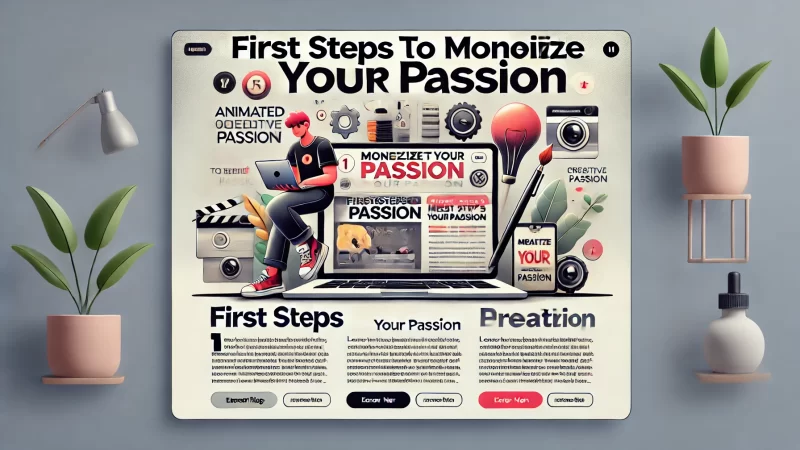
When you’re looking to earn money from your blog, the first step is always about understanding your niche and audience. What are their needs, and how can your content cater to those needs while also being profitable? From my point of view, this is where you start laying down the foundation for a monetizable blog.
My recommendation is to focus on high-quality content that solves problems or provides immense value. This could be anything from how-to guides, tutorials, or insightful articles that speak directly to your reader’s pain points.
In my opinion, the next step is to look into the various monetization strategies available to you. Could affiliate marketing, sponsored content, or selling digital products work for you? Each of these avenues has its own set of challenges and rewards. My advice is to start with one that aligns closely with your blog’s theme and your audience’s interests. Remember, authenticity is key. Your recommendations or products should feel like a natural extension of your blog.
Lastly, it’s critical to think about traffic. Without readers, there’s no one to click on your affiliate links, read your sponsored posts, or buy your products. Therefore, SEO becomes your best friend. I strongly believe in the power of SEO to attract organic traffic to your blog.
It’s about understanding what your potential readers are searching for and optimizing your content to meet those queries. This doesn’t mean stuffing your articles with keywords. Instead, it involves incorporating them naturally into valuable, reader-friendly content.
The Essential Guide to Transforming Your Blog into a Revenue Stream
Transforming your blog into a revenue stream requires a strategic approach. In my view, the first essential step is to establish trust with your audience. This means consistently delivering valuable content that resonates with your readers. My suggestion for building this trust is to engage with your audience through comments, social media, and personalized emails. This not only helps in understanding their needs better but also in creating content that’s more likely to convert.
Next, diversification of income sources plays a crucial role. Don’t put all your eggs in one basket. I recommend exploring multiple monetization methods. This could include affiliate marketing, ad revenue, sponsored posts, and selling digital or physical products. Diversification ensures a more stable income and protects your blog from fluctuations in any single revenue source.
Finally, focus on building a community around your blog. I am of the view that a loyal community is invaluable. Members are more likely to engage with your content, share it within their networks, and support your monetization efforts, whether through purchasing products or spreading the word. My advice is to nurture this community by offering exclusive content, sneak peeks, or creating a space for discussion and connection.
Proven Strategies to Earn Money from Your Blog
A recent survey revealed that blogs have become one of the top three most effective platforms for content marketing, with over 55% of marketers citing blogging as their primary content strategy. This underscores the tremendous potential blogs have not just for engaging audiences, but also for generating substantial income.
In a digital age where content is king, leveraging proven strategies to monetize your blog is not just smart; it’s essential for anyone looking to earn money online. By focusing on optimizing content, you can significantly improve your blog’s earning potential.
Optimize Your Content for Better Monetization
Optimizing your blog content isn’t just about making it search engine friendly; it’s about creating content that serves dual purposes—meeting your audience’s needs and enhancing your blog’s monetization potential. In my opinion, the first step towards content optimization is understanding your audience deeply. What problems are they trying to solve? What information are they searching for? This understanding forms the basis of creating content that not only attracts but retains audience interest.
The power of well-researched and strategically placed keywords cannot be overstated. From my perspective, keywords act as signposts that guide potential readers to your content amidst the vast sea of information online. I recommend using keyword research tools to find terms that are relevant to your content and have a high search volume but low competition.
Integrating these keywords naturally into your content helps improve your blog’s visibility, driving more traffic and, consequently, increasing your opportunities to earn money. It’s essential, however, to avoid overstuffing your content with keywords, as this can detract from the reader’s experience and even penalize your blog in search rankings.
Crafting content that is both informative and engaging is a delicate balance, but it’s one that pays off in terms of reader engagement and monetization. My advice is to write content that speaks directly to your readers’ interests and needs, providing them with value that goes beyond the surface level. This could mean creating comprehensive guides, how-to articles, or insightful analyses that delve deeper into topics they care about.
By doing so, you’re not just building trust and authority; you’re also creating a platform that’s attractive to advertisers, affiliate programs, and other monetization opportunities. Remember, content that resonates with your audience is content that sells.
Keywords: The Gateway to Increased Traffic and Revenue
In the realm of blogging and content creation, keywords are your best allies. They act as the critical link between what your potential audience is searching for and the content you provide. If you ask me, the strategic use of keywords is fundamental to driving increased traffic to your blog. By integrating high-demand, low-competition keywords into your content, you can significantly boost your blog’s visibility in search engine results pages (SERPs), attracting more visitors and, subsequently, enhancing your revenue potential.
The art of keyword optimization goes beyond merely stuffing your posts with relevant terms. It’s about understanding the intent behind the searches. From my perspective, this involves diving deep into the minds of your target audience to comprehend what they truly seek online.
My suggestion is to use keyword research tools to uncover terms that your audience uses, then craft your content to answer their queries or provide solutions to their problems. This approach not only improves SEO but also increases the relevance and value of your content to readers.
Most importantly, the placement of keywords within your content matters a great deal. I recommend incorporating them naturally into titles, headings, meta descriptions, and throughout the body of your articles in a way that enhances readability. Remember, the ultimate goal is to provide a seamless and enjoyable reading experience for your audience while maximizing your blog’s discoverability. Strategic keyword use, when done correctly, can be a game-changer for your blog’s traffic and income.
Crafting Compelling Content that Sells
The heart of any successful blog is compelling content that engages, informs, and persuades readers. In my opinion, creating content that sells is not about direct promotion; it’s about establishing trust and authority in your niche, which, in turn, naturally leads to monetization opportunities.
Crafting posts that resonate with your audience requires a deep understanding of their interests, challenges, and desires. It’s about offering them something they can’t find elsewhere—unique insights, actionable advice, or solutions that genuinely make a difference in their lives.
To achieve this, storytelling can be an incredibly powerful tool. I believe that weaving narratives into your content can captivate your audience’s attention and make complex topics more relatable. My advice is to share personal experiences, case studies, or customer stories that illustrate key points. This not only makes your content more engaging but also helps to humanize your brand, building a stronger connection with your readers.
Furthermore, a strong call to action (CTA) is crucial in content that aims to sell. Whether you’re promoting a product, encouraging sign-ups to your newsletter, or driving traffic to other parts of your blog, clear and compelling CTAs guide your readers on what to do next. From my perspective, the best CTAs are those that offer value, promise benefits, or evoke curiosity, compelling readers to take the desired action. Crafting content that sells is about blending valuable information with strategic persuasion, leading to increased engagement, loyalty, and, ultimately, revenue for your blog.
Affiliate Marketing: A Blogger’s Goldmine
“Affiliate marketing has made businesses millions and ordinary people millionaires.” — Bo Bennett. This statement underscores the transformative potential of affiliate marketing for bloggers. It’s not just a revenue stream; it’s a goldmine for those who know how to tap into it effectively.
With the right approach, affiliate marketing can significantly boost your blog’s income, but success hinges on selecting the right programs and integrating affiliate links in a way that appeals to your audience without compromising the integrity of your content.
Selecting the Right Affiliate Programs for Your Audience
The first step in leveraging affiliate marketing is choosing programs that resonate with your audience’s interests and needs. It seems to me that the best affiliate programs are those that align closely with your blog’s niche and content. For instance, if you’re running a fitness blog, your audience would likely appreciate recommendations for workout gear, nutritional supplements, or fitness apps.
My advice is to conduct thorough research on potential affiliate programs, considering factors like commission rates, product quality, and the reputation of the affiliate company. I strongly believe that promoting products you genuinely believe in not only enhances your credibility but also increases the likelihood of conversions.
It’s essential to understand your audience deeply. What do they value? What problems are they trying to solve? Answering these questions can guide you in selecting affiliate programs that offer real solutions, thereby fostering trust and loyalty. My recommendation is to start small, with a few well-chosen affiliate partnerships, and gradually expand as you gain insights into what works best for your blog and your audience.
Techniques to Integrate Affiliate Links Seamlessly
Once you’ve selected the right affiliate programs, the next challenge is integrating affiliate links into your content in a way that feels natural and adds value. It seems to me that the key to successful affiliate marketing lies in transparency and strategic placement. I recommend always disclosing your affiliate relationships to your readers upfront, as honesty builds trust.
Moreover, incorporating affiliate links within high-quality, valuable content can enhance their effectiveness. For example, including product reviews, how-to guides, or tutorials that naturally incorporate the affiliate product can be a subtle yet powerful way to encourage clicks without appearing overly promotional.
An essential technique, in my opinion, is to weave affiliate links into compelling narratives that engage the reader. Whether it’s a personal story of how a product improved your life or a detailed comparison post, content that tells a story tends to resonate more deeply with audiences. Additionally, ensuring that your content is SEO-optimized with relevant keywords can increase its visibility, thereby driving more traffic and potential clicks on your affiliate links.
From my perspective, another valuable strategy is to utilize various formats for affiliate link integration, such as banners, text links, or even video content, depending on what best suits your content and audience preferences. My advice is to monitor the performance of your affiliate links closely, using analytics to understand what resonates with your audience. This data can inform future content and affiliate link placement strategies, optimizing your affiliate marketing efforts for better results.
Maximize Your Blog’s Earning Through Advertisements
Just as a billboard in a bustling city square can command attention and drive business, so too can well-placed advertisements on your blog. However, the digital landscape offers a far more nuanced environment than physical advertising spaces.
The key to maximizing your blog’s earnings through advertisements lies not just in the volume of ads but in selecting the right types and platforms that align with your audience and content. Let’s explore how you can navigate this landscape to enhance your blog’s revenue potential effectively.
Understanding Ad Networks: Which Fits Your Blog?
Deciding on an ad network is akin to choosing a partner for a dance. It’s essential to find one that moves in rhythm with your blog’s content and audience. Ad networks act as intermediaries between advertisers and blogs, providing access to a range of ads that can be tailored to fit the theme and readership of your blog. From my point of view, understanding the differences between these networks is the first step toward making an informed decision.
Google AdSense is often the go-to choice for many bloggers due to its ease of use and extensive advertiser base. However, it’s not the only option out there. Other networks like Monetag or Adsterra offer unique formats and monetization strategies that might be more suitable, depending on your blog’s niche and traffic.
My recommendation is to research and compare the features, payout thresholds, and types of ads offered by different networks. This effort can help you find the perfect match that maximizes your earnings while maintaining a positive user experience.
The compatibility of an ad network with your blog’s audience is paramount. I believe that the best ad network for your blog is one that offers relevant advertisements that resonate with your readers. This relevance can dramatically increase click-through rates and, by extension, your revenue. Additionally, consider the user experience carefully.
Ad networks that offer non-intrusive ad formats tend to preserve the aesthetic of your blog and keep your readers engaged. In my opinion, a balanced approach that considers both revenue potential and user experience is crucial when selecting an ad network.
Navigating the World of Google AdSense and Alternatives
Exploring the vast landscape of online advertising, one quickly realizes that Google AdSense, while popular, is just the tip of the iceberg. For bloggers seeking to diversify their revenue streams or find alternatives that better fit their audience’s preferences, options like Monetag, Adsterra, and HilltopAds offer compelling opportunities.
Each of these platforms brings unique advantages to the table, from innovative ad formats to flexible payment terms, providing bloggers with the freedom to tailor their monetization strategies more closely to their needs and goals.
Monetag, Adsterra, and HilltopAds: A Closer Look
Monetag prides itself on offering user-friendly solutions that cater to both publishers and advertisers. Its appeal lies in the simplicity of integration and a broad selection of ad formats, making it a viable option for bloggers of all sizes. I would say that if you prioritize ease of use and versatility, Monetag might be the right choice for you.
On the other hand, Adsterra stands out with its strong focus on security and high-performing ad formats, ideal for bloggers looking to maximize earnings without compromising user experience. My advice for those concerned about ad safety and performance would be to consider Adsterra.
HilltopAds, with its emphasis on optimizing ad revenue for publishers through anti-adblocker technology, represents a solution for blogs facing challenges with ad visibility. From my perspective, HilltopAds could be particularly beneficial for bloggers in niche markets seeking to overcome ad blocking and enhance earnings. It’s important to assess each platform’s compatibility with your blog’s theme and audience to ensure that the chosen alternative aligns with your monetization objectives and content strategy.
Strategies for Placing Ads: Maximizing Visibility and Earnings
The strategic placement of ads can significantly influence your blog’s earning potential. A common starting point is to ensure that ads are visible without being intrusive. My recommendation is to place ads in high-traffic areas such as the header, sidebar, or within the content itself, but always with the reader’s experience in mind. Remember, ads that disrupt the user experience can deter readers, negating any potential increase in revenue.
Leveraging analytics to understand how users interact with your site is crucial. From my point of view, analyzing data on page views, time spent on each page, and bounce rates can provide insights into where ads are most likely to be seen and clicked. This data-driven approach allows for continuous optimization of ad placement based on actual user behavior rather than guesswork.
Lastly, experimenting with different ad formats and placements over time is key to finding what works best for your blog. My advice is to not shy away from testing new formats offered by platforms like Monetag, Adsterra, and HilltopAds. For instance, native ads, video ads, or interstitials might perform better on your blog than traditional banner ads. It seems to me that the willingness to adapt and experiment is what ultimately maximizes both visibility and earnings from advertisements on your blog.
Direct Ad Sales: Crafting Your Pitch to Attract Advertisers
An intriguing fact to kick off: studies show that personalized pitches to advertisers can increase response rates by up to 50%. This statistic highlights the importance of a tailored approach in attracting advertisers to your blog.
Direct ad sales offer a unique opportunity to control which ads appear on your site, enabling you to maintain consistency with your blog’s theme and values. Crafting a compelling pitch to potential advertisers involves understanding your unique value proposition and effectively communicating it.
Setting Up a Winning Media Kit
A media kit is essentially your blog’s resume; it’s what makes the first impression on potential advertisers. To set up a winning media kit, I suggest including key analytics such as your blog’s traffic, audience demographics, engagement rates, and any notable achievements or press mentions. This data showcases your blog’s reach and influence, providing advertisers with the confidence that their investment is worthwhile.
Additionally, incorporating testimonials from previous partnerships and a portfolio of your best work can further bolster your pitch, illustrating the success and impact of past advertising campaigns.
Your media kit should also highlight the unique aspects of your blog that set it apart from competitors. From my perspective, emphasizing your blog’s niche focus, content quality, and engaged community can be particularly persuasive. Remember, advertisers are looking for more than just numbers; they want to connect with your audience in a meaningful way.
My recommendation is to make your media kit as accessible and easy to digest as possible, ensuring that key information is front and center. A clear, concise, and visually appealing media kit can make a lasting impression on potential advertisers.
Pricing Models: What Works Best for Your Blog?
Deciding on the right pricing model for your blog’s advertising space can be a challenging yet crucial task. The most common models include cost per click (CPC), cost per thousand impressions (CPM), and fixed monthly rates. In my estimation, the choice of pricing model should reflect your blog’s traffic and engagement levels.
For blogs with high traffic but lower engagement, CPM might be the best route, as it ensures you’re compensated for impressions. Conversely, if your blog boasts a highly engaged but smaller audience, CPC or fixed-rate pricing could be more lucrative, as advertisers pay for direct interactions or the perceived value of being associated with your content.
I would say that experimenting with different pricing models is key to finding what works best for your blog. My advice is to start with a flexible approach, allowing you to adjust rates based on advertiser feedback and campaign performance.
It’s also important to consider the industry standard rates within your niche, ensuring your pricing is competitive yet fair. From my point of view, transparency about what advertisers are getting for their investment is crucial. Providing clear metrics and expected outcomes can help justify your rates and build trust with potential advertisers.
Creative Ways to Generate Income from Your Blog
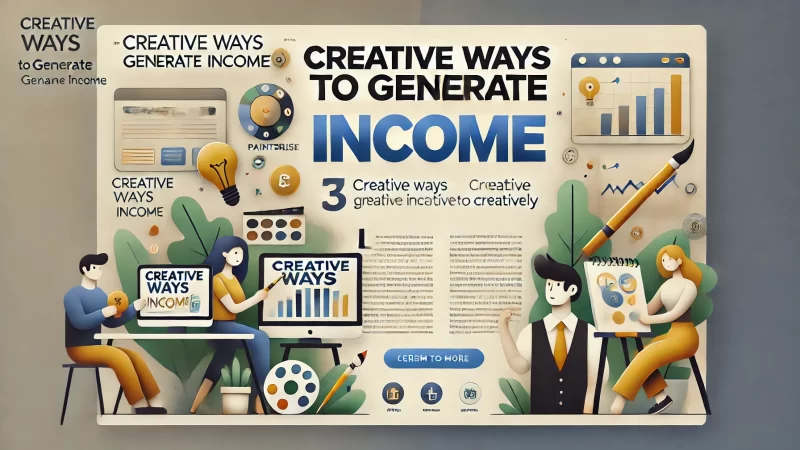
“Content is king, but engagement is queen, and the lady rules the house!” This quote perfectly encapsulates the essence of creating exclusive content for memberships as a way to generate income from your blog. It’s a strategy that goes beyond mere content creation to foster a sense of community and exclusivity among your audience.
Offering memberships allows you to provide added value through premium content, thereby creating a more engaging and rewarding experience for your readers.
Offering Exclusive Content Through Memberships
Creating a membership tier for your blog can transform your relationship with your readers, turning casual visitors into committed members of a community. It’s about offering them something unique that they can’t get anywhere else. This could be in the form of in-depth articles, video tutorials, exclusive webinars, or even personalized advice sessions.
My advice is to understand your audience deeply to identify what type of exclusive content would be most valuable and appealing to them. This insight will guide your content creation strategy, ensuring that your membership offer is both compelling and irresistible.
The key to success with memberships is to maintain a delicate balance between your free and premium content. I strongly believe that your free content must still provide immense value, serving as a teaser that leaves readers wanting more. This approach helps build trust and demonstrates the quality of insights and value members can expect by joining.
Importantly, your exclusive content should delve deeper, offering advanced insights, strategies, or personal experiences that provide tangible benefits to members. It’s this level of depth and personalization that makes membership worthwhile.
Finally, promoting your membership program is critical to its success. From my point of view, leveraging your existing platforms such as social media, email newsletters, and even your blog itself to highlight the benefits of membership is essential. Testimonials from satisfied members can be incredibly persuasive, showcasing the real-world value of your exclusive content.
Moreover, offering a trial period or a sample of premium content can lower the barrier to entry, allowing potential members to experience the value firsthand. My recommendation is to continuously engage with your members, seeking feedback and suggestions to evolve your offerings and keep your community vibrant and engaged.
Building a Loyal Community Willing to Pay for Premium Content
The foundation of a loyal community lies in consistently delivering content that resonates deeply with your audience. From my perspective, this involves not only understanding the specific needs and desires of your readers but also engaging with them on a personal level.
My suggestion is to regularly solicit feedback through surveys, comments, or social media interactions to refine your content strategy continually. This direct line of communication fosters a sense of belonging and investment in your blog, which is crucial for nurturing a community willing to pay for premium content.
Creating exclusive content that adds significant value is essential. I recommend focusing on quality over quantity, ensuring that your premium offerings provide solutions, insights, or experiences that are not available elsewhere. This could be in the form of detailed guides, exclusive interviews, early access to content, or members-only forums.
Importantly, demonstrating the impact and value of your content through testimonials and success stories can significantly motivate readers to join your community. My advice is to be transparent about the benefits of membership, highlighting how it differs from the free content and what members can uniquely gain.
Moreover, recognizing and rewarding your most engaged readers can strengthen their loyalty and encourage others to join. From my point of view, implementing loyalty programs, offering discounts, or providing early or exclusive access to new products or services can make members feel valued and deepen their connection to your community.
My recommendation is to always look for ways to enhance the member experience, ensuring that your community not only remains loyal but also grows through positive word-of-mouth.
Tools and Platforms to Launch Your Membership Program
Selecting the right tools and platforms is critical for launching and managing a successful membership program. In my estimation, platforms like Patreon, MemberPress (for WordPress users), and Substack offer robust solutions for bloggers looking to monetize through subscriptions or memberships. These platforms provide a variety of features including payment processing, content management, and subscriber analytics, which are invaluable for tailoring your offerings to meet the needs of your audience.
Each platform has its strengths, and my advice is to choose one that aligns with your technical skills, budget, and specific requirements for engaging with your community. For example, Patreon is great for creators seeking flexibility in offering various membership tiers, while MemberPress integrates seamlessly into WordPress, offering greater control over content and subscriber management.
Substack, on the other hand, simplifies the process for writers focusing on newsletters. My suggestion is to carefully evaluate the features, costs, and community feedback on each platform to determine which best supports your goals.
Finally, it’s important to integrate these tools seamlessly into your existing blog and social media presence. Ensuring a smooth user experience from content discovery to subscription management is key. From my perspective, the easier it is for readers to access and enjoy your content, the more likely they are to support you financially.
My recommendation is to invest time in setting up and testing your chosen platform thoroughly before launch, and continuously seek feedback from your community to make improvements. Remember, the goal is to build a sustainable model that benefits both you and your loyal readers.
Launching Digital Products: A Path to Passive Income
Creating digital products represents a remarkable opportunity for bloggers to generate passive income. This avenue is not just about selling; it’s about sharing your expertise and passions in a format that can reach and benefit a global audience around the clock.
Whether it’s ebooks, courses, software, or templates, the potential to earn while you sleep is an enticing prospect. However, the key to success lies in identifying which products to create and understanding the best practices for marketing them effectively.
Identifying What Digital Products to Create
The first step in this journey is to identify what digital products to create, which should be driven by a blend of your expertise, passion, and market demand. My suggestion is to start by assessing the needs and challenges of your audience. What problems are they looking to solve? What knowledge can you provide that will make a significant difference in their lives or work? Conducting surveys, analyzing feedback, and monitoring discussions within your niche can provide valuable insights into what your audience values most.
Next, consider the intersection between your skills and what your audience is willing to pay for. It’s essential to create a product that not only interests you but is also viable from a commercial perspective. I recommend looking at existing offerings in the market to identify gaps you can fill.
Creating a unique selling proposition (USP) is critical; it differentiates your product from competitors and makes it more appealing to your target audience. My advice is to focus on creating high-quality, transformative content that promises and delivers tangible benefits.
Moreover, it’s vital to consider the format that best suits your content and audience preferences. Whether it’s video tutorials, downloadable guides, or interactive software, the format should enhance the learning experience and accessibility of your product. From my point of view, the more user-friendly and engaging your product is, the higher its potential for success.
My suggestion is to prototype and test different formats with a segment of your audience to gather feedback before fully committing to product development.
Best Practices for Marketing Your Digital Products
Once you have identified and created your digital product, the next crucial step is marketing it. The foundation of a successful marketing strategy is a deep understanding of your target audience. I believe in creating buyer personas to tailor your marketing efforts effectively. This involves segmenting your audience based on demographics, interests, and buying behavior to personalize your marketing messages and reach the right people with the right message at the right time.
Content marketing is a powerful tool to generate interest and demand for your product. I would say that creating valuable content that addresses your audience’s problems and subtly promotes your digital product as the solution can build trust and authority. My recommendation is to leverage your blog, social media channels, email marketing, and even guest posting on related blogs to disseminate your content widely.
Furthermore, strategic use of promotions and discounts can significantly boost your sales, especially during the launch phase. Offering limited-time discounts, bundling products, or providing exclusive bonuses to early buyers can create urgency and encourage purchases. From my perspective, it’s also important to collect and showcase testimonials and case studies from early users to build credibility and reassure potential customers of your product’s value.
Harnessing the Power of Email Marketing to Increase Earnings
An astonishing 59% of marketers identify email as their most significant source of ROI, highlighting the undeniable power of email marketing in today’s digital ecosystem. For bloggers and content creators, this translates to a golden opportunity to increase earnings through strategic engagement and direct communication with their audience.
Email marketing allows for personalized content delivery, direct promotion of products and services, and the nurturing of a community around your blog, all of which are instrumental in boosting your blog’s revenue potential.
Email Marketing Recommendations
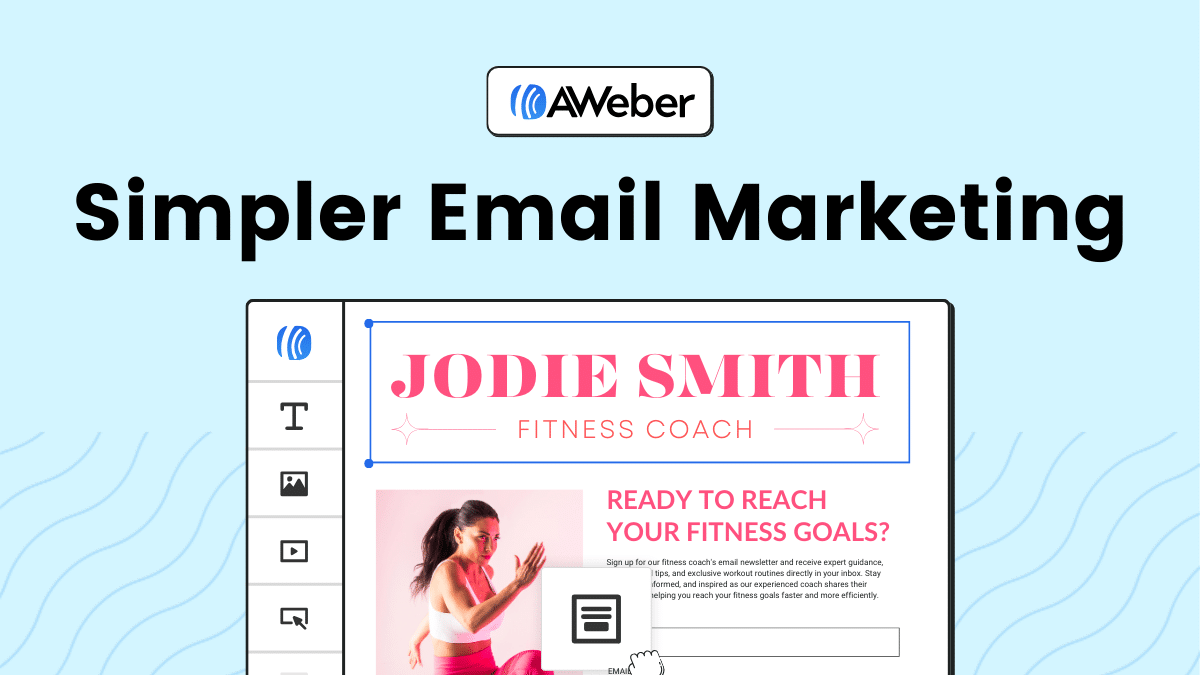 Aweber
| 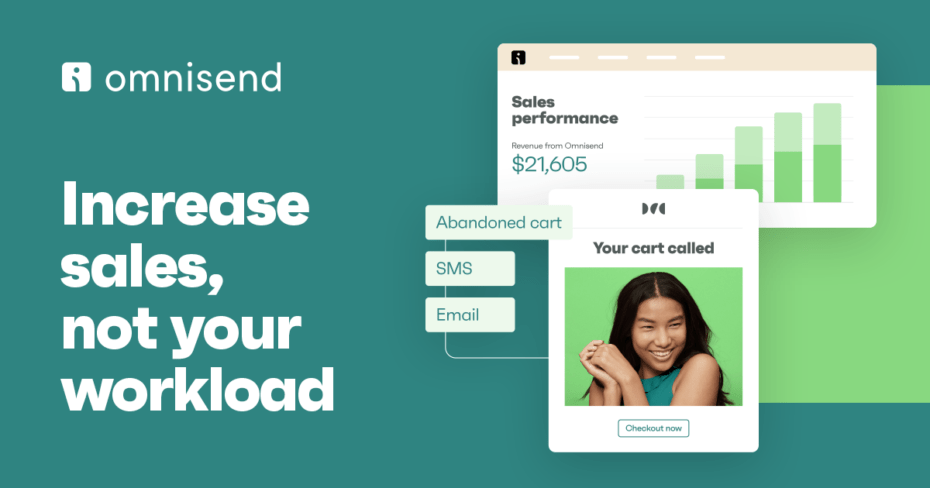 Omnisend
| 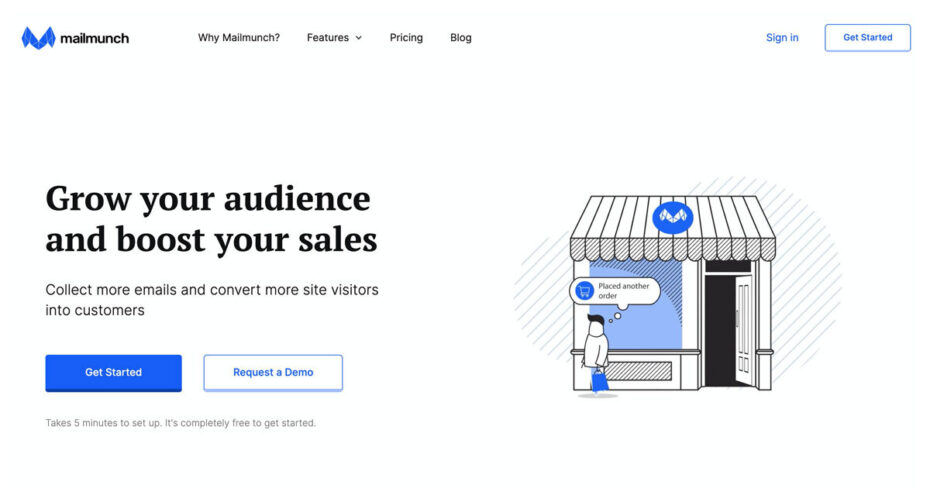 Mailmunch
|
Growing Your Email List: Techniques and Tools
Building a robust email list is foundational to leveraging the full potential of email marketing. The first step towards this goal involves creating compelling reasons for visitors to subscribe. Lead magnets, such as free ebooks, exclusive content, or valuable newsletters, serve as powerful incentives.
I recommend crafting lead magnets that align closely with your audience’s interests and needs, providing immediate value and establishing a basis for ongoing engagement. It’s about offering something so enticing that giving up an email address feels like a fair trade.
Next, optimizing your website for email sign-ups is crucial. This means strategically placing subscription forms where they are most likely to catch your audience’s attention without disrupting their browsing experience.
From my perspective, high-conversion areas include the top of your homepage, at the end of blog posts, and as a floating sidebar that accompanies readers as they scroll. Tools like OptinMonster can be instrumental in implementing these features, offering a range of customizable forms and pop-ups designed to maximize sign-up rates.
Furthermore, promoting your email subscription through social media and other channels can significantly expand your reach. I suggest using social media posts, direct messages, and even paid advertising to highlight the value of your email content. Incorporating testimonials or previews of exclusive email content can also pique interest and drive subscriptions.
Importantly, ensure the sign-up process is as straightforward as possible; a complicated sign-up process can deter potential subscribers no matter how enticing your offer may be.
Effective Lead Magnets to Entice Subscribers
Creating an effective lead magnet is akin to offering a perfectly brewed cup of coffee to a tired morning commuter: it’s not just appreciated; it’s eagerly accepted. Lead magnets are essential tools in the blogger’s arsenal, designed to convert casual visitors into subscribers by offering them something of value in exchange for their contact information.
The key to a successful lead magnet is ensuring it resonates with your audience’s interests and needs, providing them with immediate value and a compelling reason to engage further with your content.
To start, understanding your audience is crucial. I suggest diving deep into your site analytics, social media interactions, and current trends within your niche to identify topics that are both relevant and enticing to your readers. From this insight, you can create lead magnets that genuinely appeal, such as downloadable guides, free courses, templates, or exclusive videos.
These resources should not only be valuable but also directly related to the content of your blog, ensuring coherence in your messaging and reinforcing your expertise and authority in your niche.
Moreover, the presentation of your lead magnet matters significantly. I recommend designing your lead magnet with professionalism and aligning its aesthetic with your brand. Tools like Canva or Adobe Spark can help in creating visually appealing and high-quality materials. Remember, the goal is to make your lead magnet so irresistible that visitors are compelled to subscribe.
By addressing a specific problem or offering a sought-after solution, your lead magnet becomes a gateway to a more substantial relationship with your audience.
Crafting Email Campaigns That Convert
Once you’ve captivated your audience with an enticing lead magnet and grown your email list, the next step is to craft email campaigns that convert. Effective email campaigns are much more than mere notifications; they’re strategic communications designed to build trust, foster relationships, and ultimately, encourage your subscribers to take a desired action, whether that’s making a purchase, signing up for a webinar, or engaging with your latest content.
Personalization is key to increasing engagement and conversion rates. I believe that addressing subscribers by name, segmenting your email list based on interests or behaviors, and tailoring content to fit these segments can significantly enhance the effectiveness of your campaigns.
Tools like Mailchimp or ConvertKit offer advanced segmentation features, allowing you to customize your messages based on subscriber data. This level of personalization makes each email feel like a conversation rather than a broadcast, increasing the likelihood of engagement.
Finally, the call-to-action (CTA) in your emails should be clear, compelling, and easy to find. From my point of view, a good CTA is the linchpin of a successful email campaign, guiding subscribers towards the next step you want them to take.
Whether it’s to read a blog post, check out a new product, or take advantage of a special offer, your CTA should stand out and be straightforward. My advice is to experiment with different CTA placements, designs, and messages to see what resonates best with your audience, always keeping in mind that the ultimate goal is to provide value and enhance their connection with your blog.
Monetizing Your Email List Without Alienating Subscribers
Monetizing an email list is an art form that requires a delicate balance between providing value and promoting products or services. The challenge here lies in engaging your subscribers with content they find useful and interesting, while also introducing them to products or services that generate revenue.
The key to success is to ensure that your promotional content never overshadows the value your emails consistently bring to your audience. It’s about enhancing their experience, not interrupting it.
Selling Through Email: Balancing Promotions and Value
To sell through email effectively without alienating your subscribers, it’s crucial to integrate promotional content seamlessly with value-added content. I suggest adopting the 80/20 rule, where 80% of your content provides pure value—this could be in the form of tips, insights, news, or tutorials—and the remaining 20% focuses on promotions or sales.
This strategy ensures that your subscribers feel they are gaining more than they are being asked to give. It’s also important to personalize your sales pitches according to the recipient’s interests and past interactions with your blog. Tools like segmentation and personalization can make your emails feel tailored to each subscriber, increasing the relevance of your promotions.
Moreover, transparency and honesty are critical when selling through email. I recommend clearly labeling promotional emails and being upfront about any affiliate links or partnerships. This honesty not only builds trust but also respects your subscribers’ intelligence and autonomy in making purchasing decisions.
Additionally, offering exclusive deals or content to your email subscribers can make them feel valued and more receptive to your promotions. It’s a way of saying thank you for their loyalty and engagement with your blog.
Partnership and Sponsored Content Opportunities
Exploring partnerships and sponsored content opportunities can also be a lucrative way to monetize your email list without compromising the integrity of your content. My advice is to partner with brands or products that align closely with your blog’s niche and values, as well as the interests of your subscribers.
This alignment ensures that sponsored content is relevant and adds value rather than feeling like an intrusion. When introducing sponsored content, I believe it’s essential to maintain a clear distinction between what is sponsored and what is not, ensuring transparency with your audience.
Crafting sponsored content that resonates with your audience requires creativity and a deep understanding of their preferences and needs. My recommendation is to weave stories or use cases around the sponsored product or service, showing rather than telling how it can benefit your subscribers. This approach can make the content feel more engaging and less like a straightforward advertisement.
Furthermore, seeking subscriber feedback on sponsored content can provide valuable insights into their preferences, allowing you to refine your approach and make future sponsored content even more compelling.
In my view, monetizing your email list while keeping subscribers engaged and loyal involves a blend of providing unmatched value, transparently promoting products or services, and fostering partnerships that resonate with your audience’s interests. By carefully balancing these elements, you can create a sustainable revenue stream from your email list that complements your content and strengthens your relationship with your subscribers.
Leveraging Social Media to Boost Your Blog’s Revenue

Leveraging social media to enhance your blog’s revenue is akin to opening your windows to let the sunlight in; it brightens every corner and brings warmth to your space.
In the vast and interconnected world of digital content, social media platforms serve as crucial conduits that connect your blog with a broader audience, turning casual browsers into dedicated followers and, eventually, into contributors to your blog’s revenue.
Enhancing Your Social Media Strategy for Better Engagement
To truly enhance your social media strategy for better engagement, it’s essential to understand where your potential readers spend their time and what kind of content resonates with them the most. This understanding is the first step in crafting a social media presence that not only attracts attention but fosters meaningful interactions.
I recommend conducting an audit of your current social media performance to identify what works and where there’s room for improvement. This could involve analyzing post engagement, follower growth rates, and the types of content that receive the most interaction.
Once you have a grasp of your audience’s preferences, it’s time to create content that speaks directly to their interests and needs. My suggestion is to use a mix of content types, including images, videos, polls, and stories, to keep your audience engaged and interested. Visual content, in particular, has been shown to significantly increase engagement rates.
Moreover, integrating interactive elements, such as polls or question prompts, encourages direct participation from your followers, making them feel more connected to your blog and brand.
Furthermore, consistency in your posting schedule is key to keeping your audience engaged over time. I believe that using social media management tools like Buffer or Hootsuite can help you maintain a consistent presence on social media, even on days when you’re not able to post in real-time. These tools also offer analytics features, which can be invaluable in fine-tuning your strategy based on actual performance data.
Remember, the goal is to maintain an active and engaging social media presence that not only draws people to your blog but also encourages them to contribute to its revenue through subscriptions, purchases, or participation in affiliate programs.
The Role of Social Media in Driving Traffic and Earnings
Social media is not just a tool for connecting with friends and family; it’s a pivotal platform for bloggers to drive traffic and increase earnings. Think of social media as the bustling marketplace of the digital age, where each share, like, and comment is akin to word-of-mouth advertising that can propel your blog from obscurity into the spotlight.
The direct correlation between a well-executed social media strategy and a blog’s traffic—and by extension, its revenue—cannot be overstated. By engaging with readers on various social platforms, bloggers can significantly expand their reach and attract a larger audience to their content.
Leveraging social media effectively requires more than sporadic posts and interactions. It involves a strategic approach that aligns with your blog’s brand, voice, and content strategy. My advice is to focus on creating shareable, high-quality content that resonates with your target audience.
This could include infographics, quick tips, quotes, or engaging questions that encourage interaction. Moreover, utilizing social media analytics tools can provide invaluable insights into which types of content perform best, allowing you to refine your strategy over time for better results.
Furthermore, social media platforms offer unique ways to monetize your blog beyond direct traffic. For instance, affiliate marketing, sponsored posts, and branded content can all be promoted through your social channels.
My recommendation is to be selective and authentic in these endeavors, ensuring that any promotional content aligns with your blog’s niche and values. This approach helps maintain trust with your audience while exploring diverse revenue streams. In essence, social media is a powerful ally in not just attracting readers to your blog but also in opening doors to various monetization opportunities.
Effective Social Media Platforms for Bloggers
Choosing the right social media platforms is crucial for bloggers aiming to maximize their reach and engagement. While it might seem tempting to maintain a presence on every platform, my suggestion is to focus on those that offer the most value to your specific audience.
For most bloggers, platforms like Instagram, Pinterest, and Twitter have proven to be particularly effective. Instagram and Pinterest are visually driven platforms ideal for lifestyle, food, fashion, and travel bloggers, where compelling images can captivate users and drive them to your blog.
Twitter, with its emphasis on real-time communication, is excellent for bloggers who focus on news, technology, or any niche that benefits from timely updates and discussions. It allows for direct engagement with readers through tweets, retweets, and replies, fostering a sense of community and immediate interaction.
Additionally, LinkedIn can be a powerful platform for bloggers in professional niches, offering the chance to establish authority in their field and connect with a more business-oriented audience.
No matter which platforms you choose, the key to success lies in understanding the unique features and audience of each and tailoring your content accordingly. My advice is to experiment with different types of content and posting schedules to see what resonates most with your audience.
Engaging consistently and authentically on the selected platforms can significantly enhance your blog’s visibility and attract more readers, ultimately contributing to increased traffic and earnings. Remember, the goal is to use social media not just as a broadcasting tool but as a means to build meaningful relationships with your audience, encouraging them to become regular visitors to your blog.
Social Media Monetization Tactics That Work
In the vast sea of social media strategies, finding the right monetization tactics can seem daunting. However, when done correctly, social media can transform from a platform for sharing content to a significant revenue generator. The key to unlocking this potential lies in understanding which tactics align with your audience and brand.
By focusing on strategies that offer genuine value and foster authentic connections, bloggers and content creators can tap into lucrative monetization opportunities without compromising their integrity or alienating their followers.
Sponsored Posts: Finding the Right Partners
Sponsored posts have become a cornerstone of social media monetization, allowing bloggers to earn income by partnering with brands to promote products or services. The challenge here isn’t just finding any partner; it’s about finding the right partners that resonate with your audience and align with your blog’s values.
My suggestion is to start by identifying brands that you already use and love, as this will lend authenticity to your sponsored content. It’s also important to conduct thorough research to ensure potential partners hold a reputable standing in the market and share a similar target audience.
When negotiating sponsored posts, clarity and transparency are paramount. I recommend clearly outlining expectations, deliverables, and compensation in your agreements. Moreover, always disclose sponsored content to your audience in compliance with legal requirements and ethical standards. This transparency not only builds trust with your followers but also establishes a foundation for long-term partnerships with brands.
My advice is to view sponsored content as an extension of your blog, ensuring each post provides value and relevance to your audience, thereby enhancing engagement and the effectiveness of the campaign.
Utilizing Instagram and Pinterest for Visual Content Monetization
Instagram and Pinterest stand out as two of the most powerful platforms for bloggers looking to monetize visual content. These platforms are ideal for showcasing high-quality images and videos that capture the essence of your blog and engage your audience visually.
On Instagram, leveraging features like Stories, IGTV, and shoppable posts can provide varied avenues for monetization. I suggest using a mix of engaging content and direct promotions to keep your audience interested and open to sponsored posts or affiliate products.
Pinterest, with its focus on discovery and inspiration, offers a unique opportunity for driving traffic to your blog and affiliated products. By creating visually appealing pins and optimizing them for search within Pinterest, you can attract users who are actively looking for ideas and solutions.
My recommendation is to invest in creating high-quality, pinnable images for your blog posts and using rich pins to add extra context. Additionally, collaborating with brands on sponsored pins or utilizing Pinterest’s advertising options can further enhance your monetization efforts.
Your Path to a Profitable Blogging Journey
Embarking on a blogging journey with the aim of generating income is both an exciting and challenging endeavor. It requires dedication, creativity, and a willingness to adapt and grow. Most importantly, it calls for a strategic approach to content creation, audience engagement, and monetization. As you navigate this journey, remember that the key to a profitable blog lies not just in attracting readers but in building a loyal community that values your content and trusts your recommendations.
I recommend focusing on providing high-quality, relevant content that solves problems, entertains, and informs your audience. This foundation will not only help you attract readers but also retain them. From my perspective, engagement is crucial. Encourage conversations, solicit feedback, and be responsive. Such interactions not only enhance your blog’s community feel but also provide valuable insights that can guide your content strategy and monetization efforts.
Lastly, exploring various revenue streams—from affiliate marketing and sponsored content to selling digital products and services—can significantly boost your blog’s income. However, my advice is to choose monetization methods that align with your blog’s niche and your audience’s preferences. This alignment ensures authenticity and maintains trust, which are indispensable in your path to a profitable blogging journey.
Remember, success in blogging doesn’t happen overnight. It’s a continuous process of learning, adapting, and growing. With patience, persistence, and a focus on providing value, your blog can become not just a platform for expression but a source of sustainable income.
frequently asked questions (FAQ)
How can I start monetizing my blog?
To start monetizing your blog, focus on building quality content and a steady audience first. Once you have traffic, you can explore various monetization strategies like affiliate marketing, sponsored posts, selling digital products, and using ad networks like Monetag.
What is affiliate marketing, and how does it work?
Affiliate marketing involves promoting other companies’ products or services on your blog. You earn a commission for every sale made through your unique affiliate link. Sign up for affiliate programs related to your blog’s niche, insert the links naturally within your content, and encourage your readers to make purchases.
How many visitors do I need to make money from my blog?
The number of visitors needed to make money depends on your monetization methods. Ad networks like Google AdSense require higher traffic for substantial earnings, while affiliate marketing and selling products can be profitable with a smaller but more engaged audience. Aim for consistent growth in traffic and engagement.
What types of digital products can I sell on my blog?
You can sell various digital products such as eBooks, online courses, printables, and templates. Choose products that align with your blog’s niche and address your audience’s needs. Offering value-rich, high-quality products will increase your chances of making sales.
How do I attract advertisers to my blog?
To attract advertisers, focus on building a strong online presence and a dedicated readership. Create a media kit that highlights your blog’s traffic, engagement metrics, and audience demographics. Reach out to potential advertisers directly or join ad networks that connect bloggers with brands.
Is it possible to make a full-time income from blogging?
Yes, making a full-time income from blogging is possible, but it requires dedication, consistent effort, and smart monetization strategies. Diversify your income streams by combining ads, affiliate marketing, sponsored content, and selling products or services.
How important is SEO in monetizing my blog?
SEO is crucial for monetizing your blog as it helps increase organic traffic from search engines. Optimize your content with relevant keywords, create high-quality backlinks, and ensure a good user experience. Higher search rankings lead to more visitors and potential revenue.


